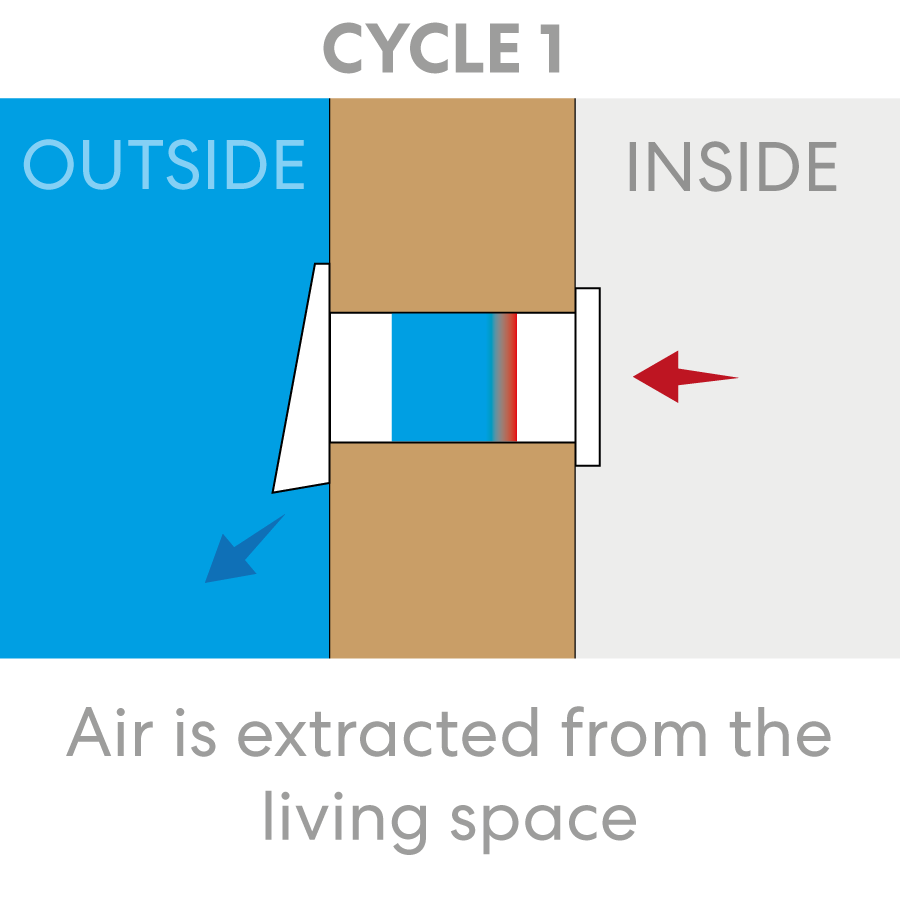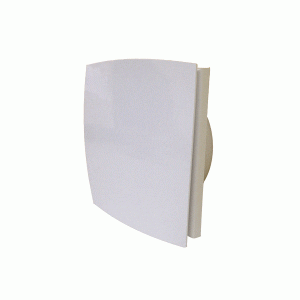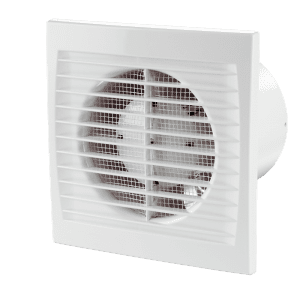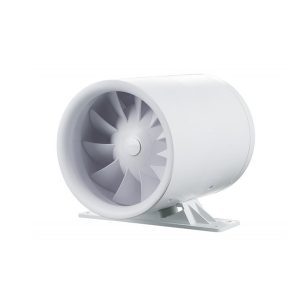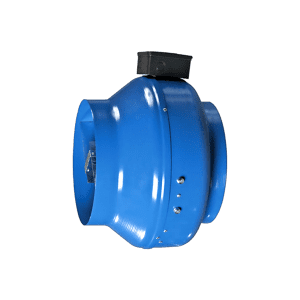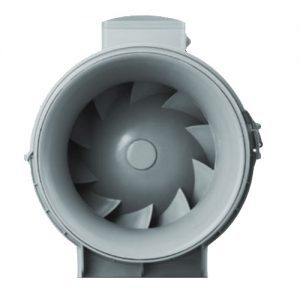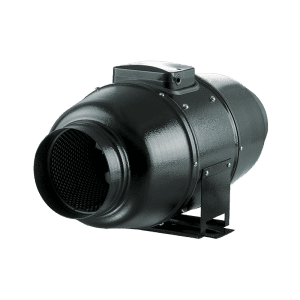How Does Ducting Impact Fan Performance?

Using a length of ducting to direct damp air and pollutants out of the building can preserve the quality of air in your home. But before you decide to go ahead, it’s important to understand how adding a length of ducting to your exhaust fan will affect its performance. The main problem is that when you increase the distance the air needs to travel, the air resistance in your ventilation system increases too.
Quick Summary
Ducting does impact performance
Ducting will impact every fan, for this reason its best to keep your ducting as short and direct as possible, with less bends and twists. A regular bathroom fan performs best with 1-2m of ducting pulled tight.
Not all fans are created equal
Generally centrifugal motors are better suited to long duct runs. The below guide will show in detail how to calculate the impact of ducting. A very worthwhile read if you need to devise a system with a lot of ducting.
An Introduction…
Air resistance in a ventilation system is mainly determined by air speed in this system. Air resistance grows proportionally to the airflow, for example a fan producing 1000 m3/hr travelling through 150mm diameter ducting will experience greater pressure loss than a fan producing 500 m3/hr per linear meter. The higher resistance in the system (in practical terms the more ducting, bends, or other obstructions) the less airflow you will end up with.
With this in mind it is important to select an appropriate product based on your requirements. At Fanco we offer a wide range of products suited to short, medium and large duct runs. Below are some examples of each to illustrate the difference.
But First – How to Calculate Pressure Loss in Flexible Ducting?
The below shows a graph which can be used to calculate pressure loss in flexible ducting per 1m of stretched flexible ducting. In order to work this out we just need to know the freeflow extraction rate of the fan (advertised in m3/hr) and the diameter of ducting to be used with the fan. Both of these pieces of information are readily available for each model on our website. For the purpose of showing an example we will look at a fan that has an extraction rate of 500 m3/hr and 200mm diameter ducting. To determine this pressure loss simply:
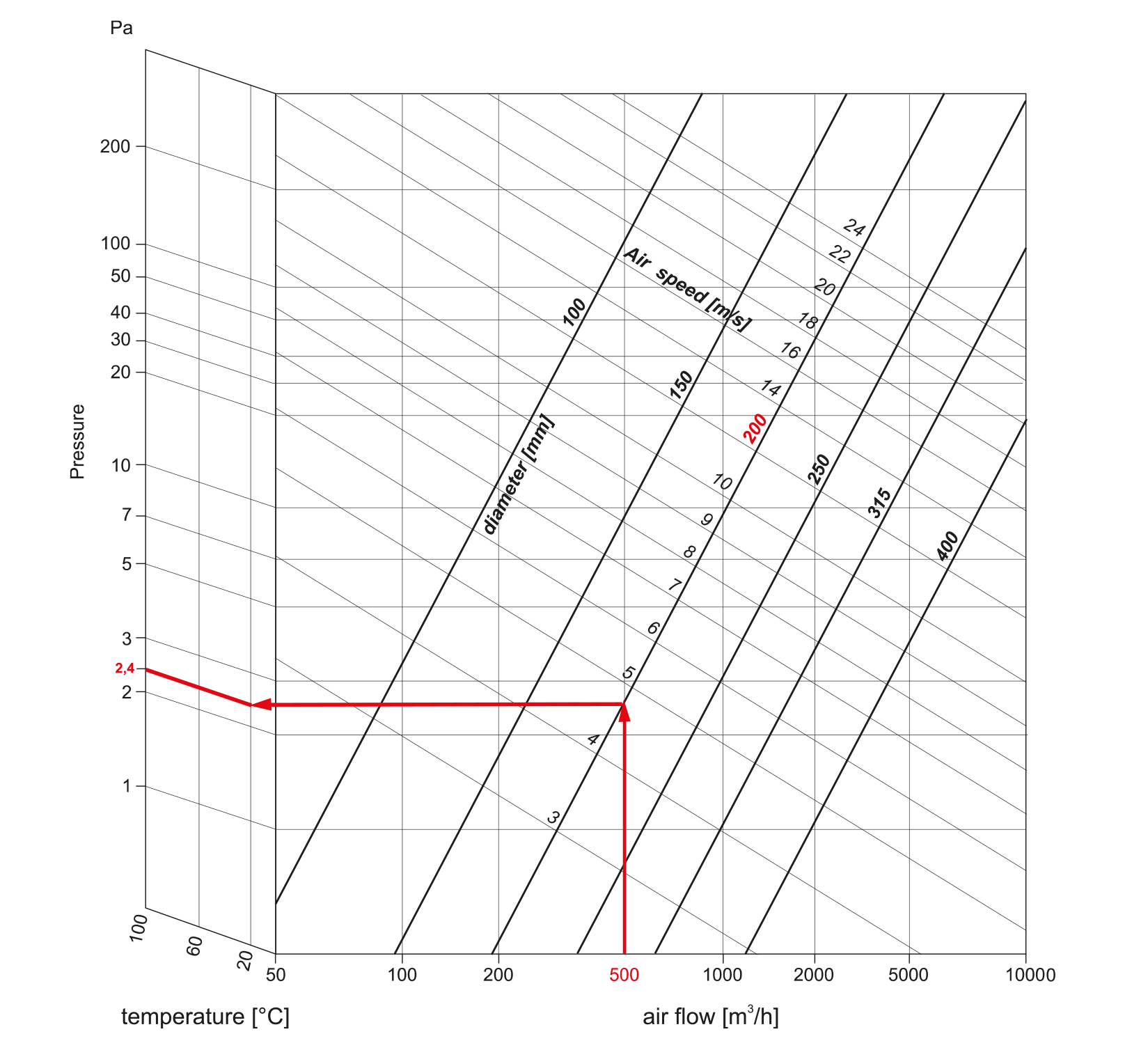
What is a Pressure Curve & How to read it
The static pressure curve shows the relationship between the static pressure capabilities of a fan compared to the fans extraction rate. Fanco pressure curves will show on the horizontal access the Pressure (measured in Pascals) and on the vertical access the extraction rate (measured in m3/hr or cubic peters per hour). The curve shows the free-flow extraction rate, which is the extraction rate with no static pressure resistance. The curve will also show the maximum static pressure and the points in between. With a pressure curve and the above pressure loss in ducting graph you are able to roughly determine the final extraction rate.
Pressure Curve Example:
Below is the pressure curve for the Fanco Hybrid Exhaust fan, a fan with an extraction rate of 482 m3/hr with a 150mm diameter duct outlet.

With the pressure curve we can now plot areas on the graph that show capacity loss at certain levels of pressure. Referring back to the first graph the pressure loss per 1m of ducting works out to be approx 9 Pascals. Therefore the impact of ducting on the Hybrid is as follows:
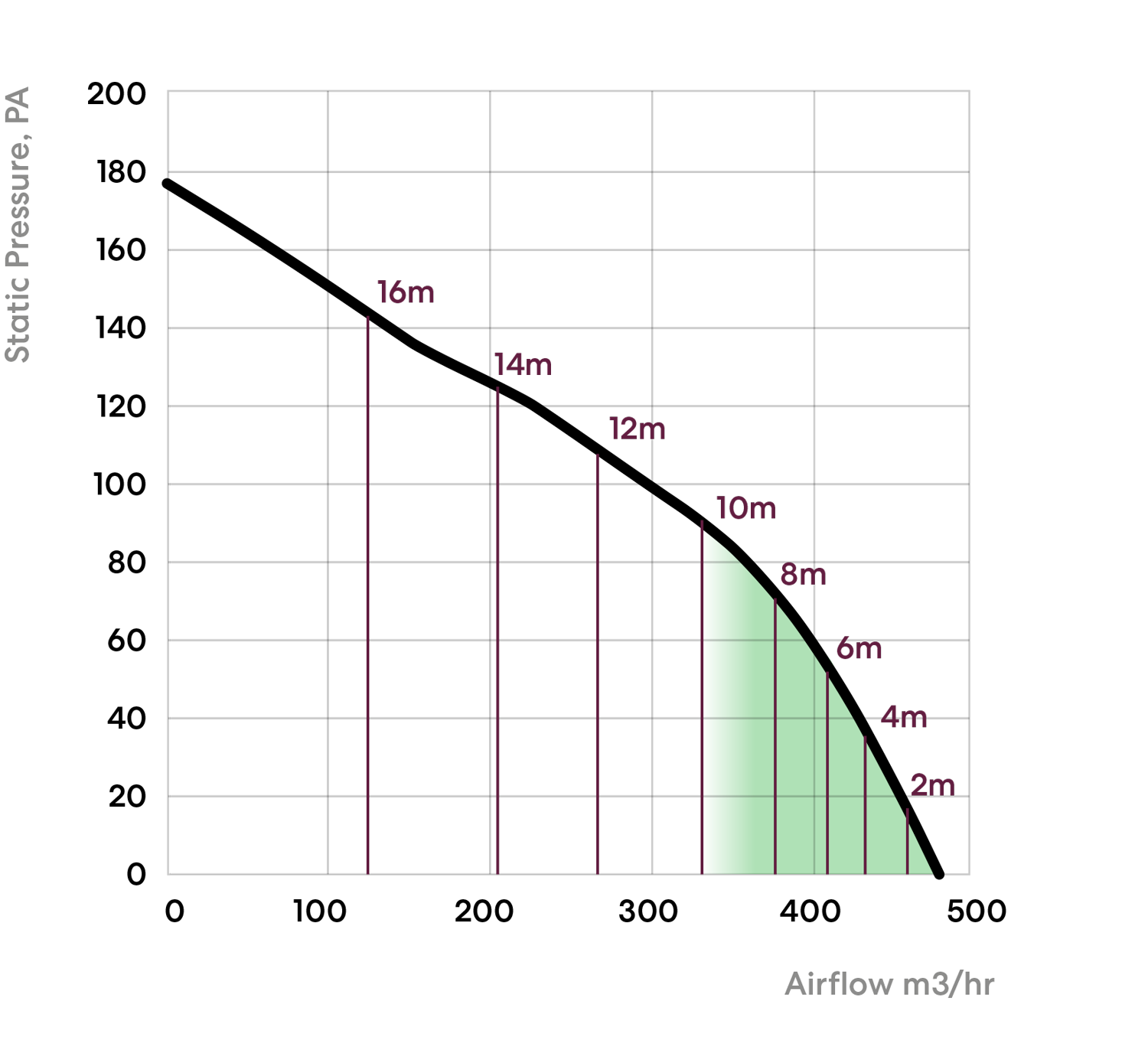
If Pressure loss reduces as ducting diameter increases why not just use the largest diameter?
It is recommended to keep the air motion within the duct at a certain rate. In flexible ducting the sweet spot is regarded as between 6.0 – 8.0 m/s. This can be calculated by using the following formula (in this example we are using a 1000 m3/hr fan with 200mm diameter ducting):
V=L/(3600*F) (m/s)
- L – air capacity [ m3/hour]
- F – duct cross section [m2]
Practical example: 200mm diameter ducting has a cross sectional area of 0.031 m2.
3600 x 0.031 = 111.6
1000 / 111.6 = 8.9 m/s.
Anything larger would result in the air moving too slowly especially if we need to factor in airflow loss due to ducting. Ducting of a smaller diameter would mean more turbulence, more resistance, and more noise as the air rushes through a smaller area. Think of it as a bottlenecking affect on the airflow. All Fanco fans have duct inlets and or outlets sized appropriately based on this principle.
Fans Suited for Short Lengths ONLY
The Chico range is a good example of a fan well suited to short runs as shown by the pressure curve below.
The popular Chico fan offers a free flowing extraction rate of 264 m3/hr. This rate means that each meter of ducting (150mm diameter) adds approximately 3Pa of pressure loss. For this reason it performs fairly well, but it is important to consider that the starting extraction rate is mid range and to ensure that the remaining extraction rate is suitable for your needs. To get the most out of this fan we would generally recommend keeping the duct run fairly short.
OUR RECOMMENDATION – KEEP UNDER 2 METERS
We have picked the Chico in this example but this level of performance will be common in any exhaust fan with an axial style motor. The advantage of this type of fan is they are often more cost effective, and if you are only ducting the fan a short length, or perhaps through a wall directly connected to an external vent it will be well suited.
Chico 150mm Pressure Curve
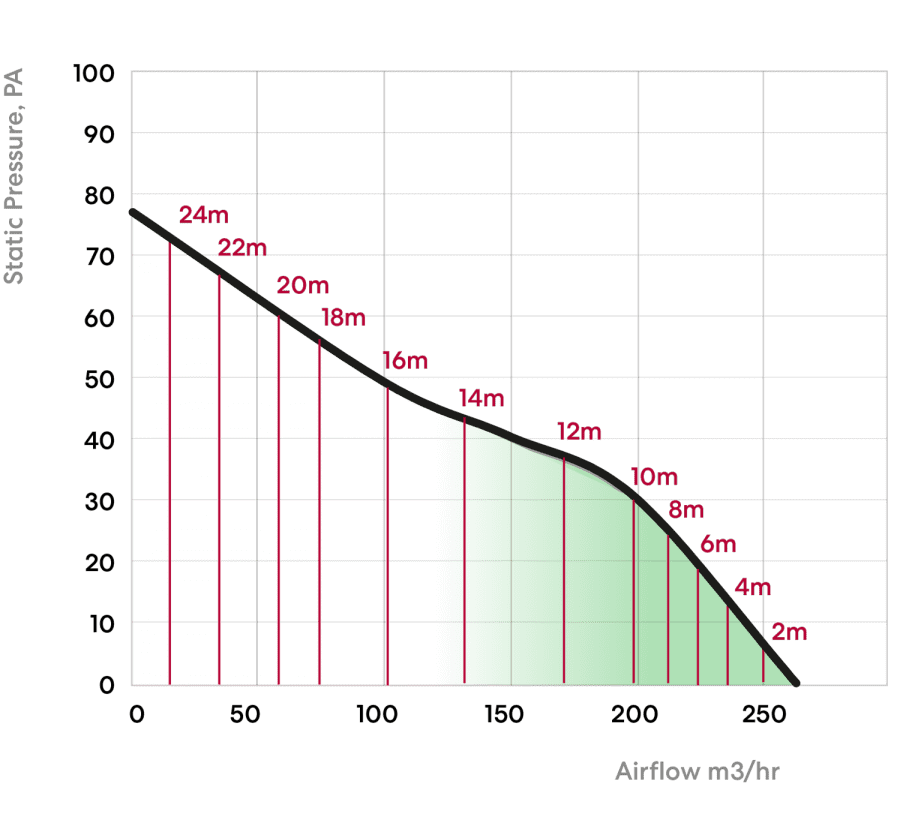
Products that display these characteristics
Fans Suited for Medium/Large Runs
The new Fanco Hybrid is a great option if you require something with as bit more power
The Hybrid exhaust fan has been engineered to provide a higher level of performance that a regular exhaust fan. As you can see from the pressure curve it retains its capacity relatively well up to approx 10 meters and then starts to drop off a bit more beyond this point. It also has a higher extraction rate as its starting point (over 460 m3/hr) so even at 10 meters of ducting its still providing something like 330 m3/hr.
The Hybrid despite being a ceiling mounted exhaust fan is able to achieve this as it is powered by a high quality centrifugal motor. As an end user you can benefit from the simplicity of installing a ceiling mounted unit but also take advantage of performance usually associated with an inline motor.
OUR RECOMMENDATION – KEEP DUCTING UNDER 8 METERS
Hybrid Pressure Curve
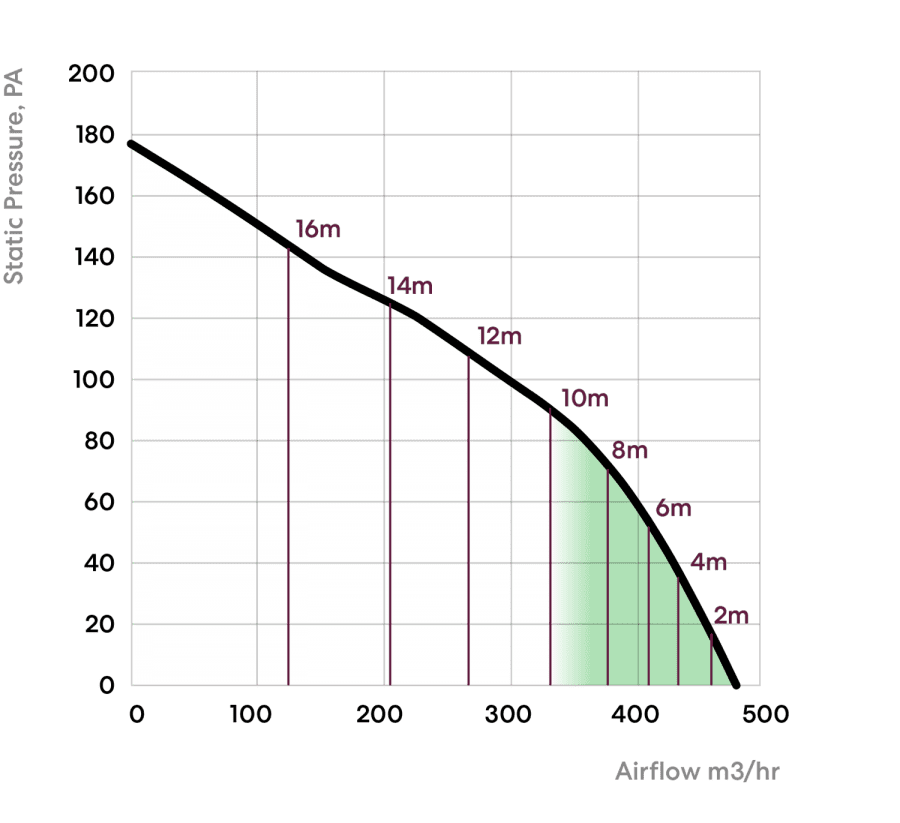
Fans Engineered for Long Duct Runs
Centrifugal Inline fans are the gold standard
This pressure curve is taken from a Fanco VKM 150 Centrifugal inline fan. You can see that the capabilities of this fan are far superior and pressure loss can be measured in 5m lengths of ducting, instead of 2 meter increments.
The fan is what we would recommend for applications that need a lot of ducting, such as a heat transfer kit or a sub floor ventilation system. At 20 meters of ducting the unit still offers approx 380 m3/hr, compare this to other fans they would literally have bottomed out offering nothing at this point.
OUR RECOMMENDATION – BEST OPTION FOR APPLICATIONS THAT REQUIRE VERY LONG DUCT RUNS
VKM 150MM Pressure Curve
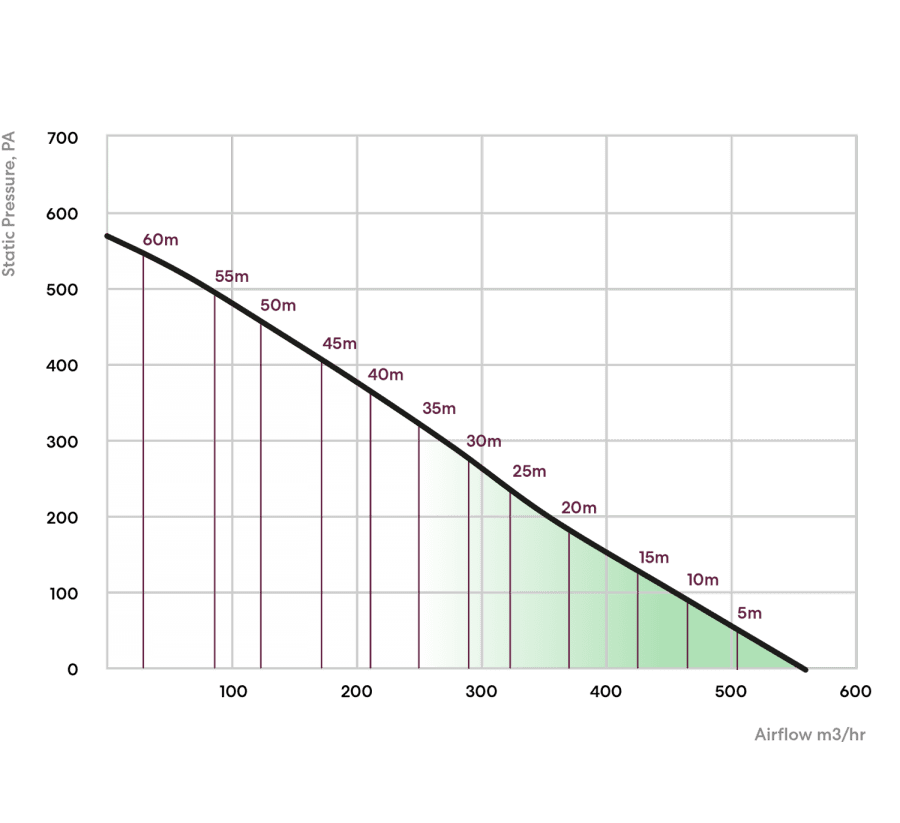
Products that display these characteristics
Not All Inline Fans are Created Equal
Axial Motor Fans do not display the same charactersitics
This pressure curve is taken from a VKO Axial 150mm inline fan. Its a perfect illustration that whilst its a capable fan for short duct runs, anything needing ducting close to 20m would result in the extraction rate being severely reduced, to something like 70 m3/hr. This highlights the importance of selecting the correct fan based on your application.
The VKO however may be more suitable for something like small bathroom or toilet extraction, where the requirements are less and the extraction rate required is not as high.
VKO 150MM Pressure Curve
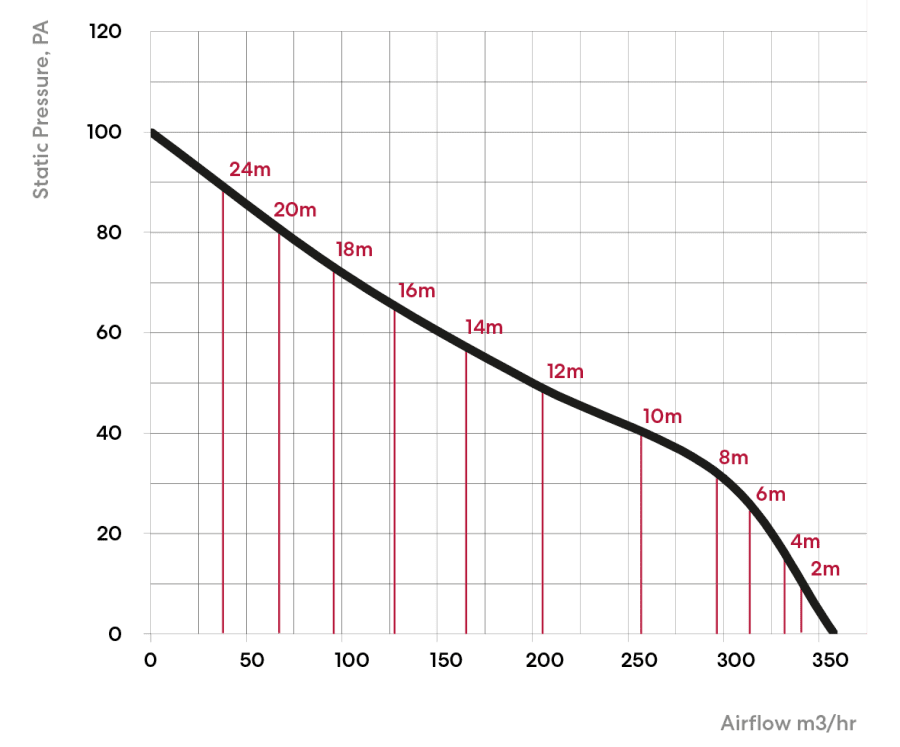
Disclaimer – all information provided in this article is designed to provide a general idea of how a fan performs when ducting is added. All data is based on the assumption that the flexible ducting is pulled tight, sags and bends in the ducting will further impact performance. Other ancillaries such as external or internal vents, backdraft shutters and junctions will also impact performance. The general rule of thumb is try to design a system that minimises pressure levels.



